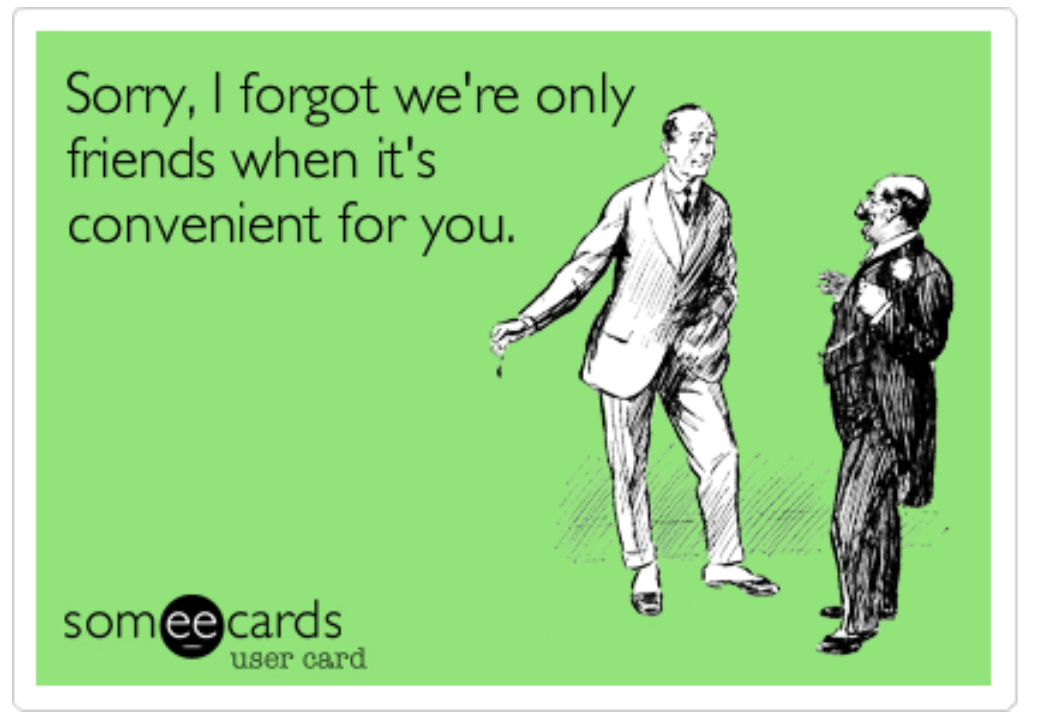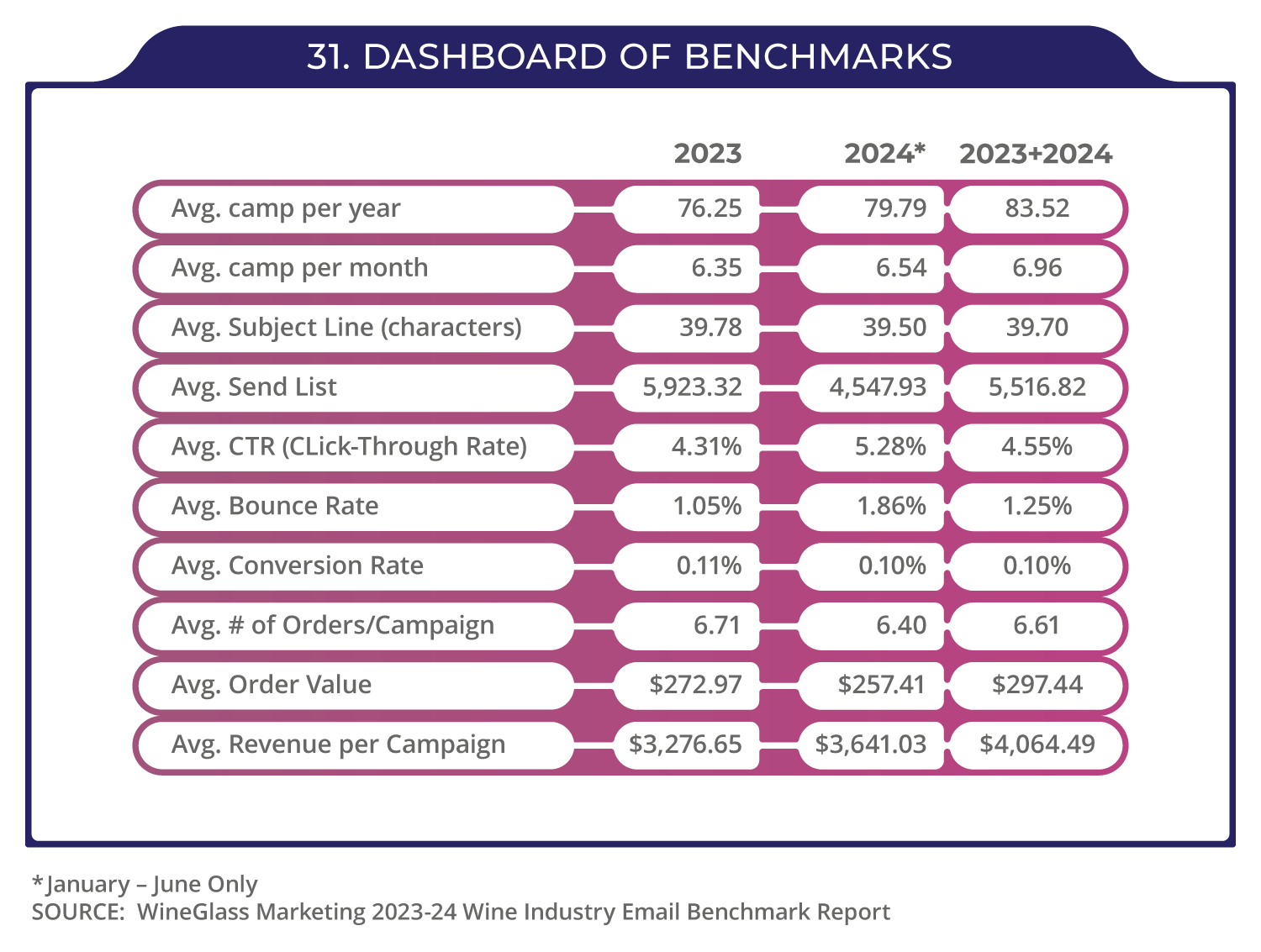
If This Was Easy, Everyone Would Do It.
Setting expectations is difficult. After all, we all want perfection and success, so isn’t it just positive thinking to predict that your campaigns will be victorious? That’s what “The Secret” tells us, anyway.
But while it can’t hurt to take a stab at manifesting abundance and contemplating gratitude, you are likely using more concrete values, such as benchmarks and previous performance, to project the results of your marketing campaigns to your management.
We submit additional data points to anticipate reasonable responses to your marketing campaigns. These data points are:
- What environment exists around this campaign?
- What workload can I reasonably handle successfully?
- What does my management consider, including the cost of goods sold?
Let’s break each of these down and include some real-life winery examples.*
CONTEXT – WHAT HAVE YOU DONE FOR ME LATELY?
Many marketing decisions are best made with data. Your database is your guidebook; you should know the segments within, their values, and their behavior. Historical data empowers you to make informed decisions. If you don’t have it, that’s fine, but then expect a low degree of certainty in your predicted response. You should test some targeting, offers, and messages to learn what your database responds to.
But along with performance benchmarks, it helps to know the history of communication with your customers. Don’t expect them to wake up quickly if you haven’t talked to your database in a predictable cadence or included information about your brand, people, or location to engage them. Customer communications are like any other relationship: the dialog needs thoughtful nurturing. If you only reach out when you have something you need (selling wine), your recipients might turn deaf to your calls to order.

Take the case of a recent boutique client who, because of the current economic conditions, had cut all social media and emails out over the past two years. Without a tasting room, he felt it prudent to stop all marketing until his new vintage release. It had been a year since his last email, two years since his last social post, and he was ready to release his next vintage. We recommended warming up the audience weeks ahead with updates about the brand, the people, the vintage, and the vineyard. Why spend time on this step? Because you remind consumers who you are and why they fell in love with you in the first place. He declined, citing that he wanted to avoid spending money on any activities that were not about sales.
We also recommended we launch a low-level advertising program to gather new mailing list signups from Meta for a few hundred dollars. Why? We know that databases naturally decay at a rate of about 2% a month, and with such a long hiatus between touchpoints, there would likely be a fair amount of database degeneration. Meta is the most efficient channel for adding contacts to a database without a tasting room. He also declined this recommendation, insisting we send the email to his database to launch the new wine. It was a beautiful email. He obsessed over every line of copy and took time in the design. It was perfect.
The database did not return with one single order.
It did result in a 10.5% bounce rate (wrong addresses), a meager 6% open rate, and zero clicks. He had expected sales to be like previous years before he cut out all consumer communication. He learned marketing isn’t a faucet you can turn on and off, and one single channel is only part of the story. The sales may come in from an email, but each transaction is influenced by social media posts, emails about the brand, texts on events, or other communications that keep your consumers interested and engaged with your winery. Without hearing from the winery in almost a year, the response was silence when the time came for the new release.
The parable? Keep up with your marketing – especially now. When you need sales post more, communicate honestly and resist the urge to shrink back into a shell to wait out the storm. Over time, if you share information of value on a consistent schedule with consumers, they will become reliable buyers. This ongoing two-way communication is a responsibility and a commitment, but it’s worth it in the long run. How long, you ask? In our experience, it takes six to nine months of repetition and best practices to train a database to open and click on your emails to the benchmark standards we share below.

WORKLOAD – IF WE COULD HOLD TIME IN A BOTTLE.
It is possible to do everything right, and still be disappointed. Another client recently came to us wanting to use Enolytics for email segmentation. Typically, they had launched one mass email each quarter to their entire database and wanted to learn if breaking it up into segments would bring in more sales. They were specific about the goals – they wanted 4x the cost (our fees) in sales. We dove in, quickly outlined a half dozen segments we wanted to try with email offers, and began the program. From the first week of May to the first week of July, we executed eight emails to micro-segments and brought in over $60,000 in sales – almost 5x our fees. When we paused for a mid-program touch base, we were surprised when the program was canceled.
Why? They explained that executing eight emails instead of one was a lot of work for their team, which was not set up to work with an agency daily, reviewing copy and images and supporting the resulting sales and customer queries the campaigns created.
This highlights our second expectation variable—time. Yes, segmentation is effective, and yes, best marketing practices take time and thought, so prepare for that. Set reasonable internal expectations for the time and effort it takes to support smart marketing.
COGS – RHYMES WITH DOGS, BUT NOT AS AWESOME.
What your winery considers costs can vary. Typically, the Cost Of Goods/production costs aren’t up for debate. The cost for grapes by ton, barrels, and storage are documented and outlined in the COO’s spreadsheets. However, the Cost Of Goods Sold is another number entirely, as when marketing gets involved, it becomes less defined. A tasting room is likely the most expensive channel to sell if you add up the mortgages or rent, staff, overhead, groundskeeping, utilities, etc. But few wineries consider that. Why are wineries quick to ignore some costs but then obsess about advertising dollars or outsourcing fees?
Our third example is on this topic, which we battle with frequently. We worked with a substantial Napa Winery, which, seeing tasting room traffic wane, wisely wanted to test whether they could attract consumers to buy wine over $100 purely online. Up for the challenge, we outlined Meta and Google ads and set up for a three-month test. We aimed to sell a three-pack of wine online to brand-new people outside their database.
At the end of the test, we had spent $7200 and brought in $21k in sales—or a ROAS of 2.89. We were thrilled as the average Return on Ad Spend is around 1.5 for Google and 1.7 for Meta. But we were up for a surprise when our client did not consider the campaign a success. Why? Because they included our cost along with the ad spend, which made it closer to breaking even.
There are a couple of breaks with logic when including outsourcing fees in your cost of goods sold, and I’m not just saying this to defend our costs. (Ok, maybe I am a little bit.) First, when your employees execute programs internally, it isn’t free. There is still a cost to having employees. You need to include or exclude consistently. The second flaw is that you don’t take a break and go home early when adding outsourced support. No, you are freeing yourself or your team to do other critical tasks of value. So instead of considering outsourcing as just a drain on funds, look at it as paying to accomplish a goal.
Another point this winery missed was lifetime value of these customers. Remember that the future value of these 42 new consumers is still being determined. Two months later, seven ordered again, and now are a total value of $30k and 50 orders.

BRING IT HOME
I will leave you with a last cautionary tale combining all three above areas into one misadventure. This involves a very successful central California winery with multiple locations. They intensely focused on traffic to their tasting rooms but needed to create a thoughtful remarketing email program. Since the last marketing manager left, they had not routinely emailed their database in over 18 months. As predicted, the database was sluggish in responding initially, but as our segmentation and repetition continued, we saw sales increase more readily. We micro-targeted groups of 300 – 1000 based on recency and product choice. The client was dubious, and we routinely had to remind him that with small lists come small sales. (After all, a 5% response on a list of 350 recent buyers of a certain SKU is only about two orders). After two and a half months, we had made back the money spent on our retainer and were just starting to see the database respond, but the client pulled the plug, saying the test was “a disaster.” Why? From his point of view, he said he could have done nothing and been in the same spot. I’m sure that is true, but it’s unclear how they’d ultimately succeed sitting on cases of unsold wine with no customers!
Since they hadn’t done much online sales before, I inquired about his internal barometer for online sales success, to which he replied 4x our retainer cost. I asked him if he included his own employees’ costs when evaluating the tasting room channel, to which he replied, “That’s none of your business.”
This example combines so many mistaken assumptions about marketing. First, a conjecture that marketing performs immediately at full steam. Second, an lack of understanding that regular segmented emails do bring a higher % of conversions, but realizing the lists are smaller so the number of sales might seem small. (But, they add up.) Third, the inconsistency of including manpower cost in one channel but not another. Finally, unrealistic metrics for success. I have heard some creative KPIs before, but never that marketing shouldn’t cost anything – that the benchmark was comparing any marketing costs to the cost of doing nothing. Doing nothing will always be cheaper. And easier.
What’s the point of my rant? Well, I got to vent, so if you made it this far, thanks for that. But know there are no tricks. There is no silver bullet. There is no magic tool, database, or platform that will bring you thousands of dollars. Like all things in life, selling your wine takes thought and focus. Marketing is a process that takes time – assume 6-12 months. And money – assume 5% of your gross sales. And effort – sometimes yours, sometimes others. But if you set reasonable expectations and communicate your goals, you can succeed by improving over time.
Ultimately, the cost of not doing marketing is assuredly failure, which is a far greater cost than anything you might risk with a few ads or emails.
*(All names, characters, organizations, places, events, incidents, and portrayals are entirely fictional and invented for and occurring in this work of fiction. Any resemblance to actual persons (living or dead) or actual entities or events is purely coincidental.)


